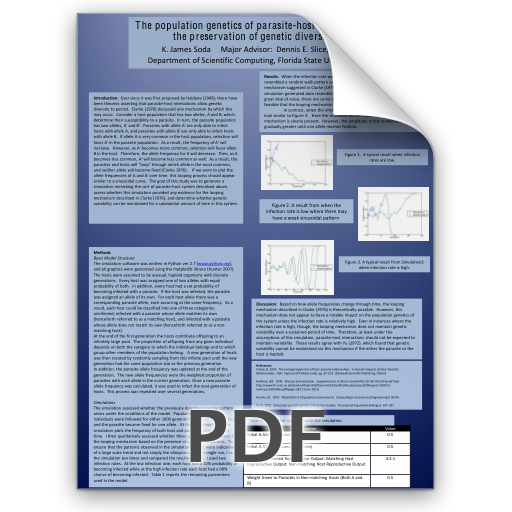
The population genetics of parasite-host systems and the preservation of genetic diversity
Introduction
Ever since it was first proposed by Haldane (1949), there have been theories asserting that parasite-host interactions allow genetic diversity to persist. Clarke (1976) discussed one mechanism by which this may occur. Consider a host population that has two alleles, A and B, which determine their susceptibility to a parasite. In turn, the parasite population has two alleles, A' and B'. Parasites with allele A' are only able to infect hosts with allele A, and parasites with allele B' are only able to infect hosts with allele B. If allele A is very common in the host population, selection will favor A' in the parasite population. As a result, the frequency of A' will increase. However, as A' becomes more common, selection will favor allele B in the host. Therefore, the allele frequency for A will decrease. Then, as A becomes less common, A' will become less common as well. As a result, the and neither allele will become fixed (Clarke 1976). If we were to plot the allele frequencies of A and A' over time, this looping process should appear similar to a sinusoidal curve. The goal of this study was to generate a simulation mimicking the sort of parasite-host system described above, assess whether this simulation provided any evidence for the looping mechanism described in Clarke (1976), and determine whether genetic variability can be maintained for a substantial amount of time in this system.


